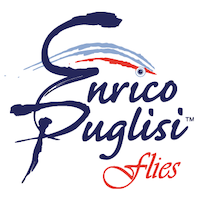Tying the Seaducer

What's the Story?
While the origin of the Seaducer is not known definitively, commercial snook fisherman Homer Rhodes is credited with creating the fly, originally the Homer Rhodes Streamer, in the 1940's. The fly was ultimately given a more colorful name by a popular fly-fishing writer in the 1980's when "Sea" and "Seduce," were combined to form "Seaducer."
What's it Good For?
The Seaducer is a simple yet versatile and productive fly pattern that will catch a wide variety of species in both fresh and salt. Snook, tarpon, redfish, seatrout, sharks, largemouth and peacock bass and many others will investigate and eat this fly.
How to Fish It:
Lightweight and stealthy, this fly lands softly on the water's surface. Because of its near-neutral buoyancy, it sinks just below the surface and passes over deeper vegetation and obstructions. The hackle tail flexes and pulses during the retrieve while the palmered head creates a bow wake to gets the fish's attention. This fly can be fished over weedbeds, along shorelines, under docks, and even in open water using a strip-strip-pause retrieve. It can also be used over bedding largemouth and peacock bass when an intrusive and threatening fly profile is needed.
Tying Options
A black head and purple tail is a great baby tarpon combination, while a red head and orange tail on a 4/0 hook can be very productive for sharks. Adding lead or bead chain eyes can allow the fly to be used in deeper water. The addition of a weed-guard loop permits the fly to be fished tight to mangrove shorelines without the fear of snagging on a regular basis.
The tail can be tied with the curve of the saddle hackles together to form a single tail, or splayed, point away from each other to form "legs" that swim and pulse as the fly is stripped. The body is often tied with two colors, for example white with a red head, with one saddle hackle wrapped from the bend of the hook 2/3 of the way up the shank and a second saddle hackle filling the front of the shank.
Available on our Website:
This fly is available, ready to fish, on the Seaducer page. If you'd like to tie it yourself, the Seaducer Fly Tying Kit includes all the materials you will need. In addition to the tan pictured here, the kit is also available in white and red.














